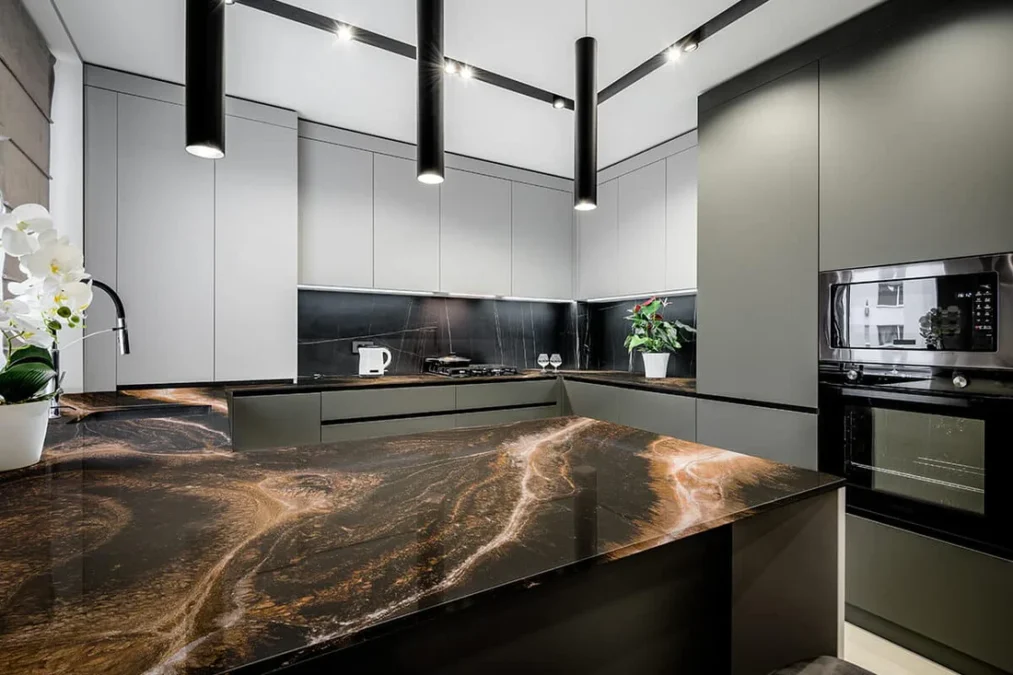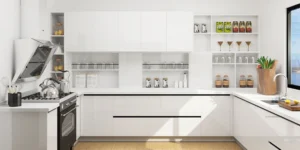The Complete Guide to Stone Coat Epoxy: Transforming Surfaces with Style and Durability?

In-home Stone coat epoxy has quickly gained popularity in home improvement and DIY projects for its versatility and durability. Whether you’re looking to upgrade your countertops and floors or even create custom art pieces, stone coat epoxy provides a unique way to achieve high-end, stone-like finishes without the cost and hassle of natural stone. In this comprehensive guide, we’ll explore what stone coat epoxy is, its benefits, its applications, and how to use it to transform your home.
What is Stone Coat Epoxy?
Stone coat epoxy is a specially formulated type of epoxy resin designed to mimic the look of natural stone, like marble or granite while offering high durability and a glossy finish. It’s a popular choice among DIY enthusiasts and professional contractors for creating aesthetically pleasing and highly resilient surfaces. Stone coat epoxy is known for being easy to work with and producing professional-looking results, even for beginners.
Unlike other types of epoxy, stone coat epoxy is self-levelling, UV-resistant, scratch-resistant, and capable of creating intricate colour patterns. It’s often used to coat countertops, bar tops, tabletops, and floors. With the proper techniques, it can replicate the look of granite, marble, and other expensive stone materials, making it an affordable and flexible option for home improvement projects.
Benefits of Stone Coat Epoxy
Using stone coat epoxy offers several advantages over other surface treatments and traditional stone materials. Here are some key benefits:
- Affordability
- Natural stone surfaces, like granite or marble, can be expensive to install and maintain. Stone coat epoxy provides a cost-effective way to achieve a similar look without the high price tag.
- Durability
- Stone coat epoxy is highly resistant to scratches, heat, and stains, making it an ideal choice for high-traffic areas like kitchens and bathrooms. Once cured, it forms a tough, protective layer that can withstand daily wear and tear.
- Versatility
- This epoxy can be applied to various surfaces, including wood, concrete, and existing laminate countertops. It’s also suitable for indoor applications, such as countertops, tabletops, bar tops, and flooring.
- Customizability
- One of the most exciting aspects of stone coat epoxy is the ability to create unique, customized designs. You can mix pigments, metallic powders, and colour additives to create any desired colour or pattern. Whether you want a natural stone look or something entirely abstract, stone coat epoxy offers limitless possibilities.
- Ease of Application
- While it may seem daunting, stone coat epoxy is surprisingly easy to apply, even for beginners. Most stone coat epoxy products are designed to be user-friendly, with clear instructions and a self-levelling formula that ensures an even, professional finish.
- UV Resistance
- High-quality stone coat epoxy products include UV inhibitors, which prevent yellowing and maintain the original colour of your project over time. This feature is essential for surfaces exposed to sunlight.
Common Applications of Stone Coat Epoxy
Stone coat epoxy can be used in various projects around the home or in commercial spaces. Here are some of the most common applications:
- Countertops
- Stone coat epoxy is frequently used to give countertops a high-end, stone-like appearance. It’s a popular choice for kitchen and bathroom countertops, offering a durable, easy-to-clean surface. Adding metallic pigments and colourants allows you to achieve effects resembling marble, granite, or other natural stones.
- Tables and Bar Tops
- Many use stone-coat epoxy to create custom tabletops or bar tops with unique designs. You can create patterns, add swirls, and even embed objects like shells, stones, or coins for a personalized look. The epoxy provides a transparent, glossy layer that enhances the visual appeal of any design.
- Floors
- Stone coat epoxy can be used for flooring in basements, garages, and even living spaces. It creates a seamless, water-resistant surface that’s easy to clean. Epoxy floors can be customized with colour pigments to create a unique, artistic look or a simple, polished finish.
- Artwork and Crafts
- DIY enthusiasts and artists also use stone-coat epoxy to create custom artwork. You can make abstract art, river tables, jewellery, and other decorative items with the right tools. The epoxy’s glossy finish enhances colours and adds a professional touch to your creations.
- Repairing and Refinishing Surfaces
- If you have a worn, scratched, or outdated surface, stone coat epoxy can give it a new lease on life. It can be applied directly over materials like laminate, concrete, or wood to create a refreshed look without requiring complete replacement.
Step-by-Step Guide to Applying Stone Coat Epoxy
Applying stone coat epoxy requires careful preparation and attention to detail. Here’s a step-by-step guide to help you get started:
Step 1: Prepare the Surface
- Ensure the surface is clean, dry, and free of dust or grease. Lightly sand the surface to help the epoxy adhere better, then wipe away any residue with a damp cloth. If you’re working on a porous surface like wood, consider applying a sealant to prevent bubbles from forming in the epoxy.
Step 2: Tape and Protect Surrounding Areas
- Use painter’s tape to protect any edges or surfaces you don’t want the epoxy to touch. Epoxy can be messy, so cover nearby areas with plastic sheets or newspaper.
Step 3: Mix the Epoxy
- Follow the manufacturer’s instructions for mixing the epoxy and hardener. Be precise with your measurements, as incorrect ratios can affect the final result. Stir the mixture slowly and thoroughly to avoid introducing air bubbles.
Step 4: Add Pigments or Metallic Powders
- IAddpigments, metallic powders, or other colourants to the epoxy mixture. Suppose you want a custom colour or effect; experiment with different colours and techniques, like swirling, to achieve your desired look.
Step 5: Pour the Epoxy
- Pour the epoxy mixture onto the surface. Start in the centre and spread it outward with a trowel or brush, ensuring an even coating. The epoxy will begin to self-level, creating a smooth surface.
Step 6: Remove Air Bubbles
- Use a heat gun or propane torch to remove air bubbles from the surface. Pass the heat source quickly over the epoxy to release any trapped air. Be careful not to hold the heat source in one place for too long, as this can damage the epoxy.
Step 7: Let It Cure
- Allow the epoxy to cure according to the manufacturer’s instructions. Depending on the product, this can take 24 to 72 hours. Ensure the area is free from dust and debris during the curing process.
Tips for Working with Stone Coat Epoxy
Working with epoxy can be challenging, especially if you’re new to it. Here are some helpful tips to make your project a success:
- Work in a Dust-Free Environment: Epoxy takes time to cure, so if you’re not careful, dust and debris can quickly settle on the surface. Work in a clean, dust-free environment to avoid imperfections.
- Experiment with Color: Don’t be afraid to experiment with different colours and effects. Mixing pigments and metallic powders allows you to create one-of-a-kind designs.
- Use Protective Gear: Epoxy can irritate the skin and respiratory system. Always wear gloves and safety goggles, and work in a well-ventilated area.
- Test on a Small Area First: If unsure of acolourlourr or technique, do a small test on scrap material. This allows you to refine your technique before applying it to the main project.
Conclusion: Why Choose Stone Coat Epoxy?
Stone coat epoxy is an excellent choice for anyone looking to upgrade their surfaces without the cost and limitations of natural stone. Its affordability, durability, and customizability make it a versatile material suitable for various projects, from countertops and floors to custom art pieces. With a bit of practice and creativity, you can achieve professional-quality results that enhance the beauty and value of your home.
Whether you’re a DIY enthusiast or a professional contractor, stone coat epoxy offers an innovative way to create stunning, stone-like finishes. With proper application and care, your epoxy-coated surfaces will remain beautiful and functional for years. So, if you’re ready to transform your home with a unique and durable surface, consider trying stone coat epoxy—it may be the perfect solution for your next project.



